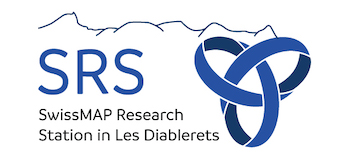-
Alexander Braverman, "Affine Grassmannian and symplectic duality"
The purpose of this mini-course is two-fold.
In the first half I plan to start by (very briefly!) recalling some basic notions of the theory of constructible sheaves on complex algebraic varieties (such as, for example, equivariant derived categories of constructible sheaves, perverse sheaves etc.) and then apply this formalism to the study of certain derived category of equivariant sheaves on the affine Grassmannian of a complex reductive group G (here the main goal will be to explain the formulation of the so called derived geometric Satake equivalence due to Drinfled and Bezrukavnikov-Finkelberg).
In the 2nd half I plan to explain applications of the above to the subject of symplectic duality. I plan to discuss topics such as (conical) symplectic resolutions and their quantizations, formulations of (various aspects of) symplectic duality,Braverman-Finkelberg-Nakajima construction of Coulomb branches of 3d N=4 gauge theories via the affine Grassmannian and its relation to symplectic duality.
Some further topics might be discussed depending on how much time is left. -
Tudor Dimofte "Algebra, geometry, and twists in 3d N=4 gauge theory"
Three dimensional N=4 gauge theories have enjoyed a rich interplay with geometry and representation theory since the 90's, particularly motivated by the discovery of 3d mirror symmetry. An initial prediction of 3d mirror symmetry was the existence of many pairs of hyperkahler cones "M_H" and "M_C" (Higgs and Coulomb branches), with the rank of the hyperkahler isometry group of M_H equal to the dimension of the resolution space of M_C, and vice versa. This may be seen as an analogue of 2d mirror symmetry relating pairs Calabi-Yau manifolds whose Betti numbers are swapped in an appropriate way.
In the last decade, the interplay between the physics of 3d N=4 gauge theories and mathematics has greatly intensified, in part due to the advent of new methods to access the structure of local and extended operators in these 3d QFT's. A broad goal of my lectures will be to review some of the recent developments, especially those coming from mathematics, while connecting them directly to fundamental ideas in 3d physics. I will organize many of these developments within the framework of topological (and occasionally holomorphic) "twists" of 3d N=4 gauge theories, and the extended TQFT's (topological quantum field theories) that they predict to exist. This leads into a major current research goal: defining and proving a top-level "3d homological mirror symmetry" equivalence of 2-categories, that would encompass all other mirror equivalences.
More specifically, I will touch on:
* the physical definition of 3d N=4 gauge theories, and their topological twists
* algebraic and geometric structures predicted by these twists -- within the framework of 3d TQFT
* what we know (and do not know) about 3d mirror symmetry
* constructions of 3d Coulomb branches, e.g. in work of Braverman-Finkelberg-Nakajima
* holomorphic twists and elliptic stable envelopes (in brief)
* a current frontier: braided tensor categories of line operators and 2-categories of boundary conditions
* the appearance and utility of vertex operator algebras in describing line operators
* algebraic vs. analytic/symplectic geometry in making mathematical sense of physical structure
* relations between 3d mirror symmetry, 2d mirror symmetry, and 4d S-duality -
Nicolas Orantin, "From enumerative geometry to differential equations and isomonodromic systems via topological recursion"
The study of random matrices has a fascinating connection with different fields of mathematics and physics ranging from number theory to topological string theories. Among such applications, the computation of moments of random matrices can be interpreted as defining generating series of discrete surfaces built by gluing together polygons by their edges. Trying to solve such a combinatorial problem, together with Chekhov and Eynard, we found a beautiful formula allowing to enumerate such surfaces by induction on their Euler characteristic. This inductive procedure, later called topological recursion, turns out to provide a universal solution to a large class of enumerative problems such as the study of statistical systems on a random lattice or the computation of integrals over the moduli space of Riemann surfaces with respect to different measures (including Gromov-Witten invariants or volumes of such moduli spaces).
In a first part of these lectures, I will introduce the formalism of topological recursion by explaining how one can transform the combinatorial problem of enumerating discrete surfaces into the
computation of residue integrals on an associated Riemann surface thanks to the definition of good generating series. The general idea is that, if one can find a generating series for the number of discs such that it defines a function on a Riemann surface, then applying topological recursion with this Riemann surface as initial data produces generating functions for the number of surfaces with any topology by induction on their Euler characteristic.I will then give some more examples of application of the recursive formula discovered in this context to other enumeration problems including Hurwitz numbers, some volumes of the moduli space of Riemann surfaces and the expression of correlators of any semi-simple cohomological field theories.
In a second part of these lecture, I will present a completely different flavour of the topological recursion. Taking as input an algebraic curve defined by a polynomial equation E(x,y) = 0, topological recursion allows to build an eigenfunction of the operator $E(x,\hat{y})$ obtained by quantising $(x,y)->(x,\hat{y})$ where $\hat{y} = \hbar d/dx$. I will explain this result and show how it gives rise to a large family of isomonodromic tau functions, providing for example solutions to Painleve equations. The simplest example of this phenomenon is that the Kontsevich's generating function of intersection numbers on the moduli space of Riemann surfaces is a formal solution to the Airy equation.
Choose timezone
Your profile timezone:




